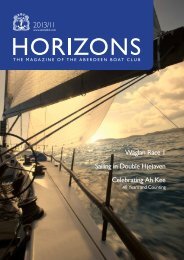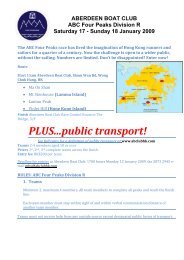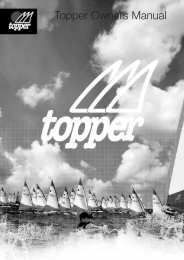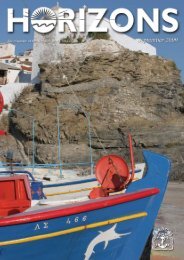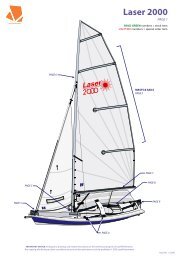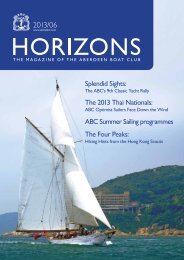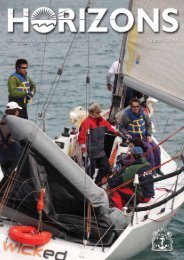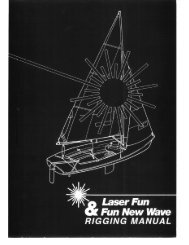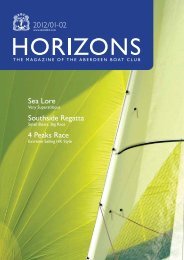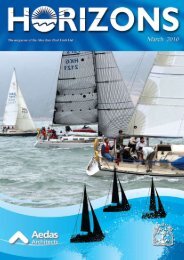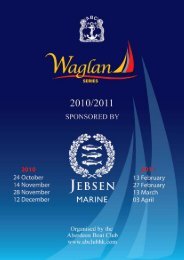Create successful ePaper yourself
Turn your PDF publications into a flip-book with our unique Google optimized e-Paper software.
Plan of a traditional Chinese sailing junkdown China’s eastern coast, aroundHainan Island and beyond, clear of alldangers, traced out by what were calledzhēnlù ( 針 路 , needle paths). Each leg ofone of <strong>the</strong>se – recorded in memory, inchants, in route books and on rough routemaps – inhered a simple formula. Theformula ran “from A, steer direction x ;after y gēng ( 更 , or traditional 2.4 hourwatch), <strong>the</strong> ship reaches B”.By following <strong>the</strong> sequence of suchinstructions – <strong>the</strong> directions on any oneof <strong>the</strong> 48 on a Chinese compass card,like dīngwèi ( 丁 未 = 202.5 0 ) – a junk couldbe sailed safely down <strong>the</strong> coast to itsdestination clear of all danger.From all along this trunk route a vastnetwork spread out. The zhēnlù ran fromnavigational waypoint to navigationalwaypoint, each marking turning pointsfor <strong>the</strong> next leg and often also marking<strong>the</strong> point where one turned towards <strong>the</strong>coast into ports and navigable rivers.O<strong>the</strong>r waypoints might mark a branchroute that led for offshore destinationsfrom Japan to Jakarta. From o<strong>the</strong>rwaypoints <strong>the</strong> mariner would be guidedto an island or bay where good sheltercould be found for a night at anchor.The junks of Coasting Past very likelyused <strong>the</strong> same navigational techniques.After all, <strong>the</strong>re’s nowhere on a sailingjunk to put a radar, an echo sounder, achart table and charts and so on. Evensupposing <strong>the</strong>re had been <strong>the</strong> money tobuy such things, why would a traditionalnavigator, <strong>the</strong> hè zhǎng ( 荷 長 ), havebo<strong>the</strong>red? Like <strong>the</strong> yottigators most of usare in our home waters, he knew wherehe was and how to get where he wasgoing because he’d been doing it half alifetime and more. The Mk I eyeball, aprodigious memory, a lead line in case ofdoubt and maybe a rutter (route book); <strong>the</strong>hè zhǎng was navigationally fully equipped.From what scholars have found,not all coastal junks would have carriedwritten navigational materials even in<strong>the</strong> last half of <strong>the</strong> 20th century. Insteadmany – almost certainly <strong>the</strong> smallerones that plied shorter, local routesas those through Hong Kong waters –were navigated down <strong>the</strong>ir traditionalroutes from memorized data. This wasP.31




